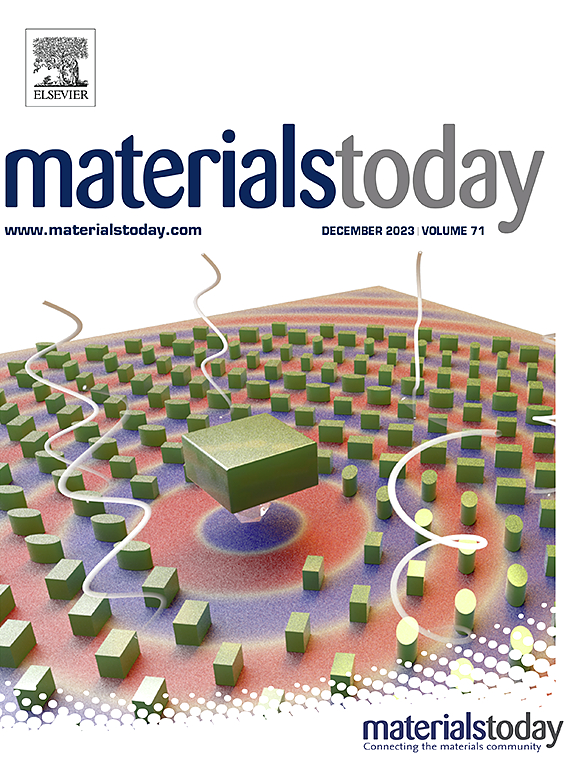Multifunctional porous soft bioelectronics
IF 21.1
1区 材料科学
Q1 MATERIALS SCIENCE, MULTIDISCIPLINARY
引用次数: 0
Abstract
Soft bioelectronics, seamlessly interfacing with the human body to enable both recording and modulation of curvilinear biological tissues and organs, have significantly driven fields such as digital healthcare, human–machine interfaces, and robotics. Nonetheless, intractable challenges persist due to the onerous demand for imperceptible, burden-free, and user-centric comfortable bioelectronics. Porous soft bioelectronics is a new way to a library of imperceptible bioelectronic systems, that form natural interfaces with the human body. In this review, we provide an overview of the development and recent advances in multifunctional porous engineered soft bioelectronics, aiming to bridge the gap between living biotic and stiff abiotic systems. We first discuss strategies for fabricating porous, soft, and stretchable bioelectronic materials, emphasizing the concept of materials-level porous engineering for breathable and imperceptible bioelectronics. Next, we summarize wearable bioelectronics devices and multimodal systems with porous configurations designed for on-skin healthcare applications. Moving beneath the skin, we discuss implantable devices and systems enabled by porous bioelectronics with tissue-like compliance. Finally, existing challenges and translational gaps are also proposed to usher further research efforts towards realizing practical and clinical applications of porous bioelectronic systems; thus, revolutionizing conventional healthcare and medical practices and opening up unprecedented opportunities for long-term, imperceptible, non-invasive, and human-centric healthcare networks.

软生物电子学与人体无缝连接,能够记录和调制曲线生物组织和器官,已显著推动了数字医疗、人机界面和机器人等领域的发展。尽管如此,由于对难以察觉、无负担和以用户为中心的舒适生物电子学的繁重需求,棘手的挑战仍然存在。多孔软生物电子学是一种新的方式,以建立一个难以察觉的生物电子系统库,与人体形成自然界面。在这篇综述中,我们概述了多功能多孔工程软生物电子学的发展和最新进展,旨在弥合生物和僵硬的非生物系统之间的差距。我们首先讨论了制造多孔、柔软和可拉伸的生物电子材料的策略,强调了材料级多孔工程的概念,用于透气和不易察觉的生物电子。接下来,我们总结了可穿戴的生物电子设备和多模态系统,多孔配置设计用于皮肤上的医疗保健应用。在皮肤下移动,我们讨论由具有组织样顺应性的多孔生物电子学实现的植入式设备和系统。最后,提出了存在的挑战和翻译差距,以引导进一步的研究努力实现多孔生物电子系统的实际和临床应用;因此,彻底改变传统的医疗保健和医疗实践,并为长期、不易察觉、非侵入性和以人为中心的医疗保健网络开辟前所未有的机会。
本文章由计算机程序翻译,如有差异,请以英文原文为准。
求助全文
约1分钟内获得全文
求助全文
来源期刊

Materials Today
工程技术-材料科学:综合
CiteScore
36.30
自引率
1.20%
发文量
237
审稿时长
23 days
期刊介绍:
Materials Today is the leading journal in the Materials Today family, focusing on the latest and most impactful work in the materials science community. With a reputation for excellence in news and reviews, the journal has now expanded its coverage to include original research and aims to be at the forefront of the field.
We welcome comprehensive articles, short communications, and review articles from established leaders in the rapidly evolving fields of materials science and related disciplines. We strive to provide authors with rigorous peer review, fast publication, and maximum exposure for their work. While we only accept the most significant manuscripts, our speedy evaluation process ensures that there are no unnecessary publication delays.
 求助内容:
求助内容: 应助结果提醒方式:
应助结果提醒方式:


